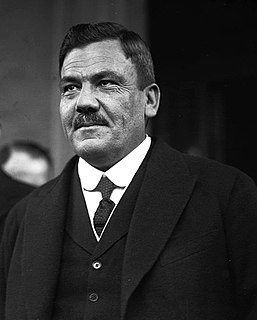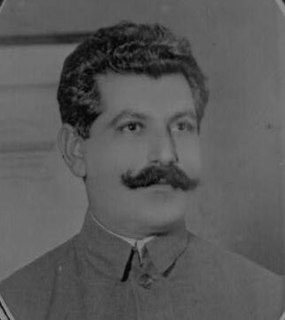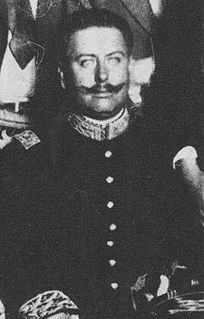Biography
In early 1920, Herrero was a rebel commander subordinate to General Manuel Pelaez. However, in March 1920, he surrendered to Carranza's forces under the promise of amnesty and he was allowed to keep his rank of General.
In May 1920, Carranza's government collapsed under pressure from forces supporting Álvaro Obregón. Carranza and his supporters attempted to flee Mexico City to Veracruz. At the Aljibes rail station, they were informed that the rail line had been severed and that Veracruz had fallen. So Carranza proposed to travel on foot north to San Luis Potosí. It was near the rural village of La Union that Carranza's small party was joined by the forces of Rodolfo Herrero. Herrero offered to guide and escort Carranza's party through the rugged rural area of northern Puebla. He escorted the party to the small settlement of Tlaxcalantongo. Herrero then excused himself by saying he had to attend to a wounded brother [Hermilo Herrero], but promised to return.

Álvaro Obregón Salido was a general in the Mexican Revolution, who became President of Mexico from 1920 to 1924. He supported Sonora's decision to follow Governor of Coahuila Venustiano Carranza as leader of a revolution against the Huerta regime. Carranza appointed Obregón commander of the revolutionary forces in northwestern Mexico and in 1915 appointed him as his minister of war. In 1920, Obregón launched a revolt against Carranza, in which Carranza was assassinated; he won the subsequent election with overwhelming support.

Mexico City, or the City of Mexico, is the capital of Mexico and the most populous city in North America. It is one of the most important cultural and financial centres in the world. It is located in the Valley of Mexico, a large valley in the high plateaus in the center of Mexico, at an altitude of 2,240 meters (7,350 ft). The city has 16 boroughs.

Veracruz, formally Veracruz de Ignacio de la Llave, officially the Free and Sovereign State of Veracruz de Ignacio de la Llave, is one of the 31 states that, along with Mexico City, comprise the 32 federative entities of Mexico. It is divided in 212 municipalities and its capital city is Xalapa-Enríquez.
In the early morning of May 21, 1920, Carranza's party was attacked by soldiers believed to be under the command of the Herrero brothers. When the dawn came, Carranza was discovered dead from several bullet wounds.
Rodolfo Herrero was ordered to Mexico City for questioning. Obregón denounced him for murder and treason. In the Capital, Herrero was questioned at length but not held. Seven months later, he was confined for a week in the military prison of Santiago Tlaltelolco. He was stripped of his military rank and cashiered out of the army, but otherwise allowed to go free.
Herrero was subsequently reinstated as a general during the presidency of Obregón, only to be dismissed again during the presidency of Lázaro Cárdenas in 1937. His brother Hermilo Herrero joined forces with Francisco "Pancho" Villa. Slowly moving up the ranks and eventually becoming a general for the Villa army. He died of natural causes in 1964. He always denied that Carranza was murdered. He espoused the alternative theory that Carranza after being wounded in the leg had committed suicide as stated by several eyewitnesses including Paulino Fontes, Manuel Aguirre, Pedro gil Farias and Ignacio Suarez. This theory presumes that general Basave y Piña never intended to kill Carranza but to capture him.

Lázaro Cárdenas del Río was a general in the Constitutionalist Army during the Mexican Revolution and a statesman who served as President of Mexico between 1934 and 1940. He is best known for nationalization of the oil industry in 1938 and the creation of Pemex, the government oil company. He also revived agrarian reform in Mexico, expropriating large landed estates and distributing land to small holders in collective holdings (ejidos).

Emiliano Zapata Salazar was a leading figure in the Mexican Revolution, the main leader of the peasant revolution in the state of Morelos, and the inspiration of the agrarian movement called Zapatismo.

Francisco "Pancho" Villa was a Mexican revolutionary general and one of the most prominent figures of the Mexican Revolution.

Plutarco Elías Calles (1877–1945) was a Mexican military general and politician. He was the powerful interior minister under President Álvaro Obregón, who chose Calles as his successor. The 1924 Calles presidential campaign was the first populist presidential campaign in Mexico's history, as he called for land redistribution and promised equal justice, more education, additional labour rights, and democratic governance.
The Battle of Celaya, 6–15 April 1915, was part of a series of military engagements in the Bajío during the Mexican Revolution between the winners, who had allied against the regime of Gen. Victoriano Huerta and then fought each other for control of Mexico. The Constitutionalists under Gen. Venustiano Carranza faced off against the Army of the Convention of Aguascalientes. The Convention allied Francisco "Pancho" Villa and Emiliano Zapata, who in practice remained in his stronghold of Morelos. The first battle of Celaya was fought April 6–7, 1915, near Celaya in present-day Guanajuato, Mexico. The second battle of Celaya was fought April 15–16. These encounters between the Constitutionalist Army led by Gen. Álvaro Obregón, Venustiano Carranza's best general, and the army under the command of Pancho Villa were crucial in determining the outcome of the Mexican Revolution.

Ignacio Bonillas Frajio was a Mexican diplomat. He was a Mexican ambassador to the United States and held a degree in mine engineering from the Massachusetts Institute of Technology. He was tapped by President Venustiano Carranza as his successor in the 1920 presidential elections, but the revolt of three Sonoran revolutionary generals overthrew Carranza before those elections took place.

Eulalio Gutiérrez Ortiz was a general in the Mexican Revolution from state of Coahuila. He is most notable for his election as provisional president of Mexico during the Aguascalientes Convention and led the country for a few months between November 6, 1914, and January 16, 1915. The Convention was convened by revolutionaries who had successfully ousted the regime of Victoriano Huerta after more than a year of conflict. Gutiérrez rather than "First Chief" Venustiano Carranza was chosen president of Mexico and a new round of violence broke out as revolutionary factions previously united turned against each other. "The high point of Gutiérrez's career occurred when he moved with the Conventionist army to shoulder the responsibilities of his new office [of president]." Gutiérrez's government was weak and he could not control the two main generals of the Army of the Convention, Pancho Villa and Emiliano Zapata. Gutiérrez moved the capital of his government from Mexico City to San Luis Potosí. He resigned as president and made peace with Carranza. He went into exile in the United States, but later returned to Mexico. He died in 1939, outliving many other major figures of the Mexican Revolution.

Genovevo de la O was an important figure in the Mexican Revolution in Morelos.

Felipe Ángeles Ramírez (1868–1919) was a Mexican military officer, noteworthy for his participation in the Mexican Revolution of 1910 to 1920.
Events in the year 1920 in Mexico.

The Constitutional Army was the army that fought against the Federal Army, and later, against the Villistas and Zapatistas during the Mexican Revolution. It was formed in March 1913 by Venustiano Carranza, so-called "First-Chief" of the army, as a response to the murder of President Francisco I. Madero and Vice President José María Pino Suárez by Victoriano Huerta during La Decena Trágica of 1913, and the resulting usurpation of presidential power by Huerta.

Felipe Adolfo de la Huerta Marcor, known as Adolfo de la Huerta, was a Mexican politician, the 38th President of Mexico from June 1 to November 30, 1920, following the overthrow of Mexican president Venustiano Carranza, with Sonoran generals Alvaro Obregón and Plutarco Elías Calles under the Plan of Agua Prieta. He is considered "an important figure among Constitutionalists during the Mexican Revolution."

Lucio Blanco was a Mexican military officer, noteworthy for his participation in the Mexican Revolution of 1910 to 1920.
Manuel Peláez Gorrochotegui (1885–1959) Mexican military officer, noteworthy for his participation in the Mexican Revolution of 1910 to 1920.

The Plan of Agua Prieta was a manifesto, or plan, drawn up by three revolutionary generals of the Mexican Revolution, declaring themselves in revolt against the government of President Venustiano Carranza. It was proclaimed by Obregón on 22 April 1920, in English and 23 April in Spanish in the northern border city of Agua Prieta, Sonora.
The Convention of Aguascalientes was a major meeting that took place during the Mexican Revolution between the factions in the Mexican Revolution that had defeated Victoriano Huerta's Federal Army and forced his resignation and exile in July 1914.

Pablo González Garza was a Mexican General during the Mexican Revolution. He is considered to be the main organizer of the assassination of Emiliano Zapata.

General Jacinto Blas Treviño González was a Mexican military officer, noteworthy for his participation in the Mexican Revolution of 1910 to 1921.
This page is based on this
Wikipedia article Text is available under the
CC BY-SA 4.0 license; additional terms may apply.
Images, videos and audio are available under their respective licenses.


















